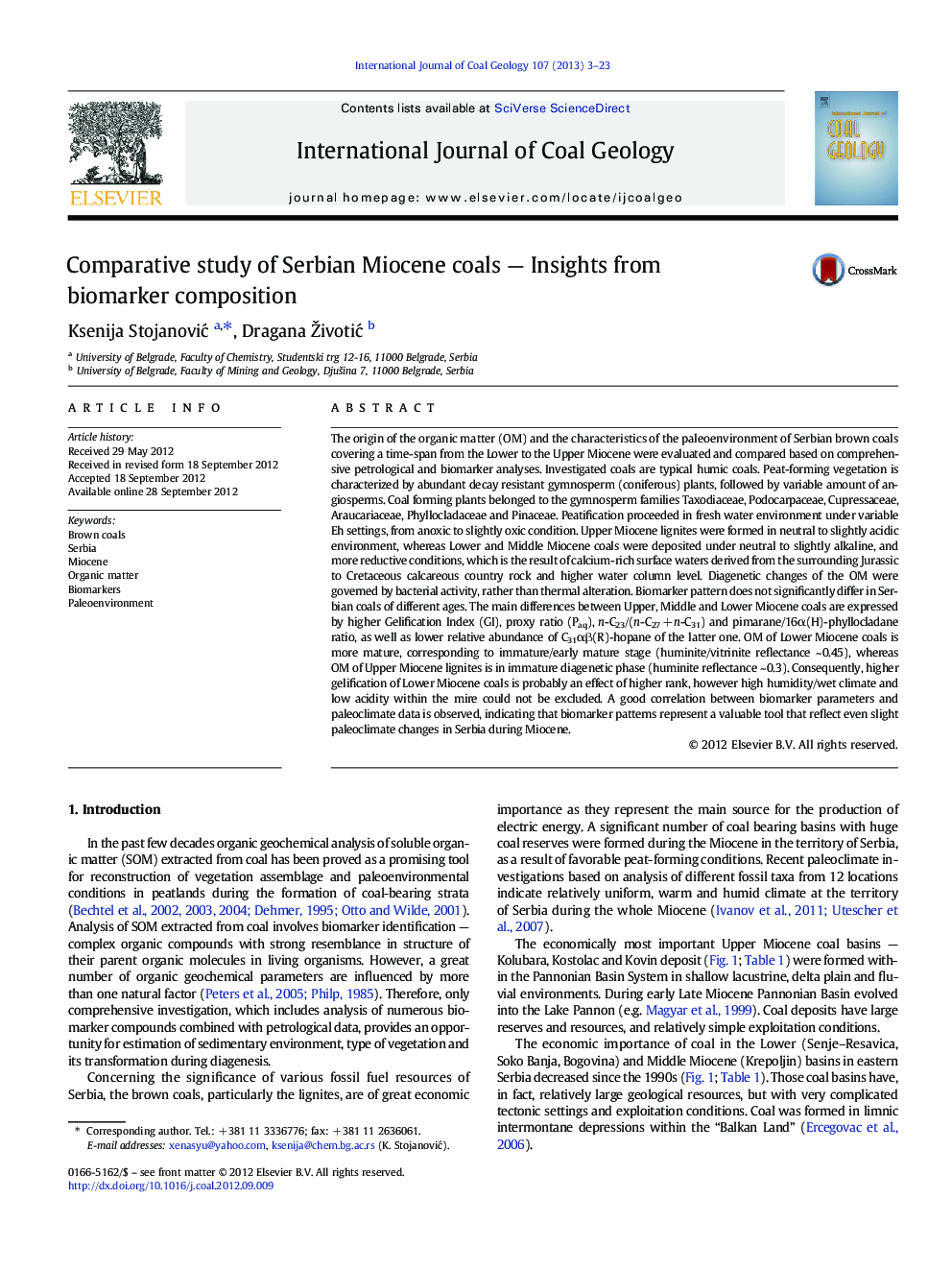| کد مقاله | کد نشریه | سال انتشار | مقاله انگلیسی | نسخه تمام متن |
|---|---|---|---|---|
| 1753422 | 1522587 | 2013 | 21 صفحه PDF | دانلود رایگان |

The origin of the organic matter (OM) and the characteristics of the paleoenvironment of Serbian brown coals covering a time-span from the Lower to the Upper Miocene were evaluated and compared based on comprehensive petrological and biomarker analyses. Investigated coals are typical humic coals. Peat-forming vegetation is characterized by abundant decay resistant gymnosperm (coniferous) plants, followed by variable amount of angiosperms. Coal forming plants belonged to the gymnosperm families Taxodiaceae, Podocarpaceae, Cupressaceae, Araucariaceae, Phyllocladaceae and Pinaceae. Peatification proceeded in fresh water environment under variable Eh settings, from anoxic to slightly oxic condition. Upper Miocene lignites were formed in neutral to slightly acidic environment, whereas Lower and Middle Miocene coals were deposited under neutral to slightly alkaline, and more reductive conditions, which is the result of calcium-rich surface waters derived from the surrounding Jurassic to Cretaceous calcareous country rock and higher water column level. Diagenetic changes of the OM were governed by bacterial activity, rather than thermal alteration. Biomarker pattern does not significantly differ in Serbian coals of different ages. The main differences between Upper, Middle and Lower Miocene coals are expressed by higher Gelification Index (GI), proxy ratio (Paq), n-C23/(n-C27 + n-C31) and pimarane/16α(H)-phyllocladane ratio, as well as lower relative abundance of C31αβ(R)-hopane of the latter one. OM of Lower Miocene coals is more mature, corresponding to immature/early mature stage (huminite/vitrinite reflectance ~ 0.45), whereas OM of Upper Miocene lignites is in immature diagenetic phase (huminite reflectance ~ 0.3). Consequently, higher gelification of Lower Miocene coals is probably an effect of higher rank, however high humidity/wet climate and low acidity within the mire could not be excluded. A good correlation between biomarker parameters and paleoclimate data is observed, indicating that biomarker patterns represent a valuable tool that reflect even slight paleoclimate changes in Serbia during Miocene.
► Peat-forming vegetation is characterized by abundant decay-resistant gymnosperms.
► Diagenetic change is governed by bacterial activity rather than thermal alteration.
► Biomarker parameters show good correlation with mean annual paleoclimate data.
Journal: International Journal of Coal Geology - Volume 107, 1 March 2013, Pages 3–23